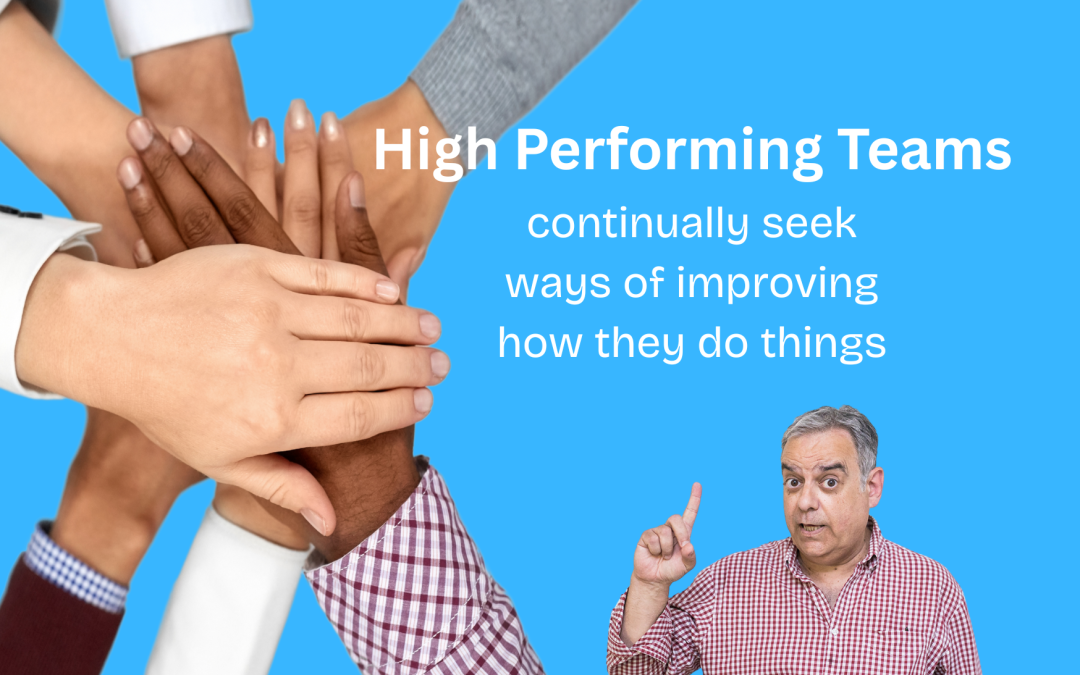Take a computing giant like Apple.
Typically they will release a major operating system up date for their phones annually. Usually these major updates come with new features, but if you are an iPhone user, you will have noticed that Apple also releases incremental operating system updates throughout the year to make improvements and fix bugs.
Let’s be honest.
Most senior teams don’t regularly talk about their operating system; the way they work together. You talk about strategy, operations, targets, risks. But when was the last time you sat down, not to review the business, but to review yourselves? To agree improvements to your ways of working as a team, or perhaps fix minor irritations that everyone knows are not helping the efficiency and effectiveness of the team?
I don’t mean the odd moan about a process that’s clunky or the usual chat about how busy everyone is. I’m not even talking about a big strategic overhaul or a three-day offsite with Post-its and group hugs around a tree, singing Kumbaya.
I mean a proper conversation about how the team operates. Honest check-ins about working rhythms, ways of working, decision-making. The stuff that actually makes or breaks your ability to operate effectively as a team.
If that sounds rare, you’re not alone. In fact, according to Microsoft, fewer than 5% of non-technical teams globally hold regular debriefs or retrospectives.
That’s mad, isn’t it?
Here’s the thing. A key characteristic of a high performing team is that they continually seek ways of improving how they do things. They never stop tweaking how they operate. They don’t just focus on what they’re doing. They zoom out and look at how they’re doing it; together. And they do it often. It’s one of the key features of being high performing. They don’t wait for things to break before they reflect. They build in the habit of pausing, talking, and adjusting before things go pair shaped.
Want to move faster? Talk more about how you work together.
Let’s assume for a minute that as a team, you had consciously and intentionally explored and agreed how best to work together; decided on the processes, rhythms and practices for collaborating together most effectively. (The thing is the vast majority of teams don’t specifically do this either).
You’d think it was standard, therefore, that senior teams would go on to revisit their ways of working now and then; with a spirit of continuous improvement. In reality? Most don’t. They rely on what’s always worked (or seemed to). They stick to the old habits: same meeting schedule, same roles, same assumptions.
It’s not out of laziness. It’s usually just busyness. Everyone’s got targets to hit, fires to fight. Reflecting on team dynamics gets pushed down the list. Until it’s too late.
But here’s what makes the difference: the best teams build it in. They make regular space to say, “Is this still working for us?” And that question alone can unlock real progress. Research by The Group for Organisational Effectiveness identified that a quick 15–30 minute review on how things are going (not what you’re doing, but how you’re doing it) can increase productivity by 20–25%.
I’ve mentioned before how clarity and unity are essential components of team effectiveness, but there’s also a strong link between team agility and this habit of reflection. Teams that pause to look in the mirror tend to adapt faster and get more done. And it’s not just about speed. It’s about innovation too. Teams that reflect more, improve faster. They spot issues early, course-correct quickly, and pounce on opportunities others miss.
The bit that often gets missed is that continuous improvement isn’t about formal change programmes or big restructures. It’s about the team having enough trust and discipline to ask, “Are the ways we are working at the moment really reinforcing our collaborative effort and our collective performance contribution?”
And if the answer is no, then doing something about it.
Why this matters to your team
According to a global survey conducted by The Economist magazine’s Intelligence Unit between 2008 and 2009, 9 out of 10 executives believe organisational agility is critical to business success. This finding echoes that of a previous survey conducted by McKinsey (2010).
The McKinsey study found that executives around the world believe that, in the turbulent business environment firms find themselves, agility results in faster time to market, improved operating efficiency as well as higher revenues.
Agility isn’t optional anymore. The world’s too fast-moving and too unpredictable for teams to stick with “the way we’ve always done it.”
If your team doesn’t regularly talk about how it works together, how it communicates, makes decisions, handles disagreement, then you’re probably carrying more friction than you need to.
It’s like driving with the handbrake on. You’re still moving, but not as fast or as smoothly as you could.
Worse, when change hits (and it always does), those teams that haven’t flexed their improvement muscle tend to freeze. They’re more rigid. Less responsive. They end up reacting when others are already adapting.
Teams that do this well are fitter, more resilient and recover faster from setbacks. They spot opportunities before others do. They thrive in uncertainty, rather than just survive it.
And they don’t get there by accident. They build the habit of reviewing intentionally.
It doesn’t have to be that complicated
You don’t need a grand new framework. Just intentional conversations.
Ask:
- What’s working well for us as a team?
- Where are we getting in our own way?
- What one small thing could we change to work better together?
That’s it. It’s straight out of GB cycling coach, Dave Brailsford’s, playbook of “aggregated marginal gains”. It involves making small, incremental improvements in various aspects of performance. Brailsford’s strategy transformed British cycling results. His concept is that if the team makes small improvements in multiple areas, the cumulative effect leads to significant performance improvement overall. And so it did. Think the 2008 and 2012 Olympics and beyond.
That’s what high performing teams do. You’re looking for small improvements, not perfection all in one go. And you don’t have to wait for things to go wrong. In fact, it’s better if you don’t.
Because if you wait for a crisis, it’s already too late.
It really doesn’t have to be complicated. A quick team check-in after a tough month. One agenda item in your next quarterly meeting that isn’t about results, but about team processes.
Nothing fancy. But done regularly, it builds the team’s ability to adapt and continuously build its effectiveness.
Still not convinced?
If you take the Microsoft study which showed that fewer than 5% of non-technical teams run regular retrospectives, that means if your team starts doing this now, you’re instantly ahead of 95% of your peers.
And the benefits compound. Teams that regularly reflect don’t just solve problems faster. They prevent them. They build the habits, the trust, and the mindset to adapt in real time. Think of it like compound interest. A small improvement today makes you stronger, sharper, and more agile tomorrow.
Of course it’s easy to skip this discipline. Especially when things aren’t broken and when everyone is maxed out with all the other plates you are having to spin. Stopping to talk about how you work together can feel like a luxury. But it’s not. It’s a necessity.
If you don’t make space for these conversations now, you’ll be forced to have them later when the cracks show, the friction increases and something breaks.
If there’s one thing I’ve learned from years of working with senior teams, it’s this: the highest-performing ones treat their ways of working like a living system. They tend it, shape it, evolve it. They’ve spent time consciously crafting their team operating system and then constantly review it to find those marginal improvements that make a difference to their effectiveness and performance as a team. This high performance team characteristic of continually seeking ways of improving how they do things is a significant feature separating teams who excel from the mediocre. As a consequence, along with the other eleven characteristics of a high performing team, they are able to execute at pace and deliver incremental impact and value.
So here’s something to mull over next time you’re catching your breath between meetings: When was the last time you and the team sat down to talk about how you’re working together, not what you’re working on?
Don’t forget to participate in our on going research into high performing teams. It takes 2 minutes and you will receive your own personal report free of charge. Participate here >>

